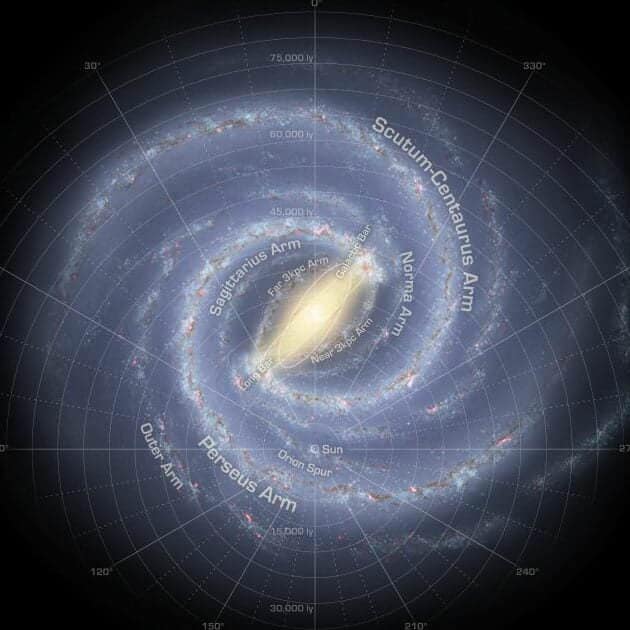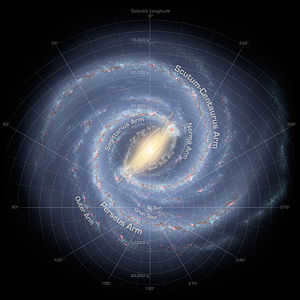
The Milky Way galaxy, alternatively known as Galactica (with capitalization), is a massive star system that encompasses the Solar System, all the individual stars visible to the naked eye, and the countless stars that merge and appear as the Milky Way.
The Milky Way is one of numerous galaxies within the Universe. It is classified as a spiral galaxy with an SBbc-type junction according to the Hubble classification. Alongside the Andromeda Galaxy (M31) and the Triangle Galaxy (M33), as well as several smaller companion galaxies, it forms the Local Group, which is part of the larger Virgo Supergroup.
Origin of the Word
The term “Galaxy” (which is also known as the “Milky Way”) is derived from the Greek word Γαλαξίας, which is derived from the word γάλα meaning milk. In accordance with ancient Greek mythology, Hera, the most powerful of the goddesses of Olympus, breastfed her milk to the infant Heracles, who hurt her and was pushed away. The milk that spurted from the goddess’s breast formed the Milky Way.
The Structure of the Galaxy
The Galaxy is approximately 30,000 parsecs in diameter (equivalent to about 100,000 light-years) and has an estimated average thickness of around 1,000 light-years. It is believed to contain anywhere between 200 to 400 billion stars, with the lowest estimate being 200 billion. The majority of these stars form a flat disk shape.
Current estimates, as of January 2009, suggest that the Galaxy has a mass of approximately 3 × 10 12 solar masses, which is equivalent to 6 × 10 42 kg. It is important to note that most of this mass is not found in stars and interstellar gas, but rather in the non-luminous dark matter halo.
The center of the galaxy
Located in the middle of the galaxy is a dense region called the bulge, also known as the balgeum. The bulge spans approximately 8 thousand parsecs. It is believed that at the heart of the Galaxy lies a supermassive black hole, known as Sagittarius A*, around which a black hole of medium mass may also orbit. The combined gravitational influence of these black holes on nearby stars causes these stars to follow unique trajectories.
The galactic nucleus is projected onto the constellation Sagittarius, with coordinates α = 265° and δ = -29°. The distance from Earth to the center of the galaxy is approximately 8.5 kiloparsecs, which is equivalent to 2.62 x 10^22 cm or 27,700 light-years.
The Galaxy is classified as a spiral galaxy, indicating that it possesses spiral arms armswithin its disk. The disk is surrounded by a spherical halo known as the halo, with a spherical corona encompassing it. Positioned approximately 8,500 parsecs away from the center of the galaxy, the solar system resides near the Galaxy’s plane (only 10 parsecs away from the North Pole of the Galaxy). Specifically, it is situated on the inner edge of the arm referred to as the Orion arm. This particular location prevents direct visual observation of the arm’s shape. Recent observations of molecular gas (CO) indicate that our Galaxy possesses two arms originating from a bar in its inner region. Additionally, there are a couple more arms in this inner portion. As the arms extend towards the outer regions of the Galaxy, they transition into a four-arm structure that can be observed in the neutral hydrogen line. [3]
The galactic halo
The galactic halo of the Milky Way has a spherical shape and spans a diameter of approximately 5-10 thousand light-years [4]. It is characterized by a high temperature of about 5×10 5 K [4].
Galactic satellite galaxies
A team of researchers from the University of California recently conducted a study on the distribution of hydrogen in regions experiencing distortion. They made an interesting discovery, revealing a strong correlation between these distortions and the orbital positions of the Milky Way’s two satellite galaxies, namely the Large and Small Magellanic Clouds. These satellite galaxies regularly traverse the dark matter that surrounds the Milky Way. While there are other galaxies that are further from the Milky Way, their relationship to our galaxy (whether they are companions or have been absorbed by it) remains unclear.
The Celestial Phenomenon of the Milky Way
When we gaze up at the night sky, we are treated to the mesmerizing sight of the Milky Way. This celestial phenomenon manifests as a softly glowing, diffuse whitish band that encircles the celestial sphere along its great circle. Its presence is particularly notable in the northern hemisphere, where it traverses a path through several constellations including Eagle, Arrow, Foxglove, Swan, Cepheus, Cassiopeia, Perseus, Ascendant, Taurus, and Gemini. In the southern hemisphere, the Milky Way graces the sky by passing through the constellations of Unicorn, Corma, Sails, Southern Cross, Circulus, Southern Triangle, Scorpius, and Sagittarius. It is worth noting that Sagittarius hosts the galactic center of the Milky Way.
History of the Galaxy’s Discovery
Many celestial objects are organized into different systems that rotate. For instance, the Earth’s Moon orbits around the Earth, and the satellites of the giant planets create their own systems that are rich in bodies. On a larger scale, the Earth and the other planets revolve around the Sun. This led to the natural inquiry of whether or not the Sun is also a component of an even more extensive system.
In the 18th century, the English astronomer William Herschel conducted the first comprehensive investigation into this matter. He conducted a thorough examination of star quantities across various regions of the celestial sphere, leading to the discovery of a prominent circular region in the sky referred to as the galactic equator. This galactic equator effectively divides the sky into two equal halves, with the highest concentration of stars found along this celestial line. Additionally, it was observed that the proximity of a particular sky region to this circle directly correlates with the number of stars it contains. Ultimately, it was determined that the Milky Way itself resides upon this celestial circle. As a result, Herschel hypothesized that all observable stars are part of a vast star system that exhibits a flattened shape in relation to the galactic equator.
Galaxy formation and future
The exact origins of galaxies are still not fully understood. In its early stages, the Milky Way contained a much larger amount of interstellar matter, primarily hydrogen and helium, which has been gradually depleted over time to form stars. It is expected that this process will continue, resulting in a decrease in natural star formation as billions of years pass. Currently, most stars are formed in the spiral arms of the Milky Way.
Potential collisions between the Milky Way and other galaxies, including the massive Andromeda galaxy, are also a possibility, [5] although making specific predictions is currently impossible due to the unknown transverse velocity of extragalactic objects.
Literature
Throughout history, individuals have been captivated by the beauty of the nocturnal heavens. They have endeavored to decipher the enigma of the luminous trail that traverses the celestial expanse. Over time, as scientific advancements emerged, this enigma was ultimately unraveled. Presently, we possess a comprehensive understanding of the intricate organization of our very own Milky Way galaxy.
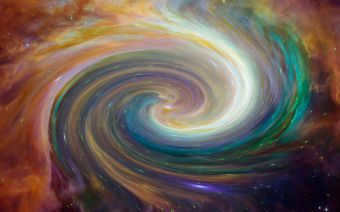
When gazing at the unobscured night sky, one is treated to a breathtaking spectacle. Amidst the vast expanse of countless shimmering stars, a brilliant white nebula graces the celestial canvas. Known as the Milky Way, this astronomical wonder bears the Greek translation of “Galaxy”.
The Origins of the Milky Way’s Revelation
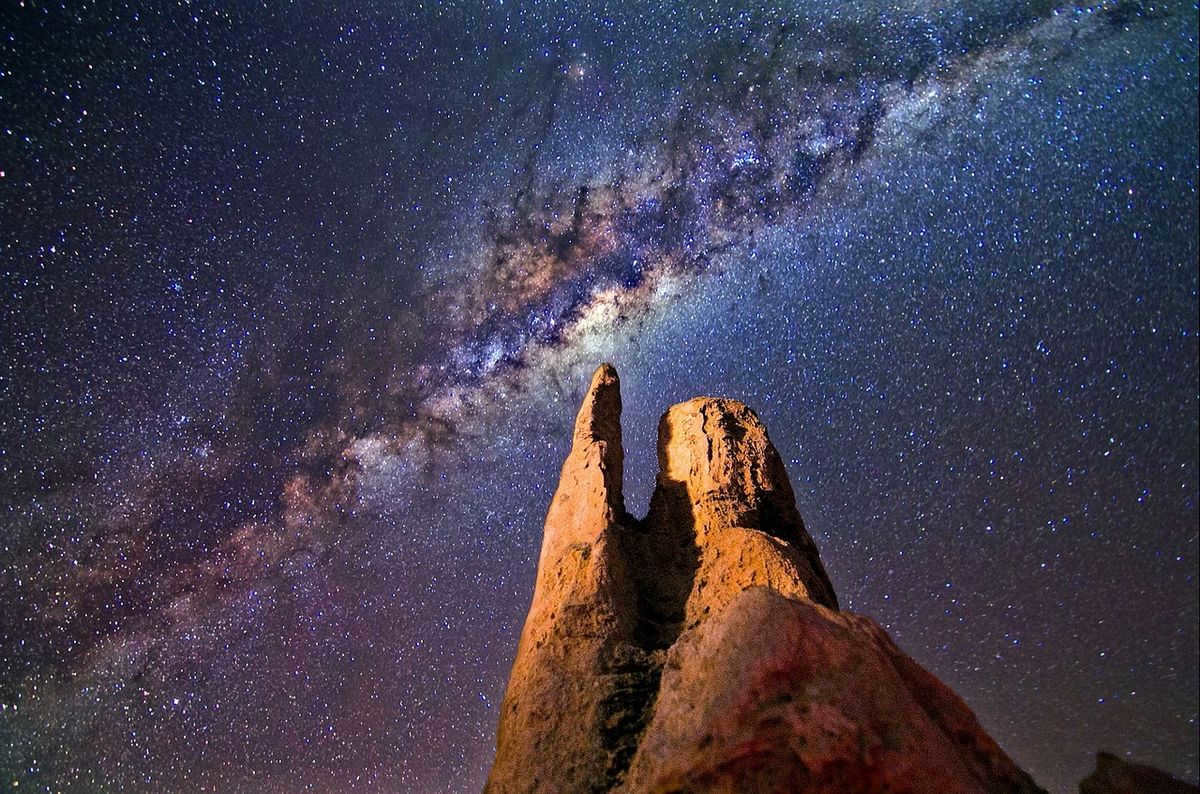
The ancient Greeks had a belief in the mythical gods of Olympus. According to their beliefs, the cloud formation in the night sky was the result of the goddess Hera accidentally spilling milk while feeding little Hercules.
In 1610, the famous astronomer Galileo Galilei (1564-1642) constructed a telescope and observed the celestial nebula. This discovery revealed that our Milky Way is composed of numerous stars and unseen dark clouds that are not visible to the naked eye.

During the 18th century, William Herschel (1738-1822) was able to organize his research on the Milky Way. He made the discovery that there exists a vast circle in the vacuum of space, now known as the galactic equator. This circle divides space into two equal halves and consists of an enormous amount of star clusters. The closer a specific area of the sky is to the equator, the greater the number of stars it contains. Our galaxy, too, resides within this circle. Based on these observations, Herschel concluded that the celestial objects we perceive comprise a star system that is flattened towards the equator.

Immanuel Kant (1724-1804) was the first person to propose that there could be other galaxies similar to our Milky Way in the vastness of space. However, the question of whether our galaxy was unique or not continued to be debated until as late as 1920. It was Edwin Hubble and Ernest Epic who ultimately provided evidence to support Kant’s hypothesis. By measuring the distance to other nebulae, they determined that these celestial objects were actually located far beyond the Milky Way and were not a part of it.

The structure of our galactic system
The Virgo Supercluster, comprised of various galaxies, encompasses the Milky Way and other nebulae. Similar to all celestial bodies, our galaxy rotates on its axis and traverses through the vast expanse of space.
As it journeys through the cosmos, galaxies collide and smaller nebulae are assimilated by larger ones. In the event of two colliding galaxies of equal size, the formation of new stars commences.

There is a theory that suggests the Milky Way galaxy will initially collide with the Large Magellanic Cloud and incorporate it into its structure. Subsequently, it will undergo a collision with the Andromeda galaxy, resulting in the absorption of our own galaxy. These events will give rise to new constellations, potentially leading to the displacement of our solar system into the vast expanse of intergalactic space. However, these collisions are not projected to occur for another 2 to 4 billion years.
With a age of 13 billion years, our galaxy has witnessed the formation of over 1000 gas clouds and various nebulae, housing an estimated 300 billion stars.
The diameter of the Milky Way’s disk measures 30,000 parsecs, while its thickness is equivalent to 1,000 light-years (1 light-year equals 10 trillion kilometers). Determining the galaxy’s mass is challenging, as the majority of its weight consists of unexplored dark matter, which remains unaffected by electromagnetic radiation. This dark matter forms a concentrated halo that surrounds the galactic center.
The configuration of the Milky Way
When observing our galaxy from outer space, it becomes apparent that it possesses a disc-like shape with a rounded surface.
The central region
Located at the center is a dense region, measuring about 8 thousand parsecs across. Within this core, there exists a high-energy, non-thermal radiation source. In the visible spectrum, it emits light with a temperature of 10 million degrees Celsius.
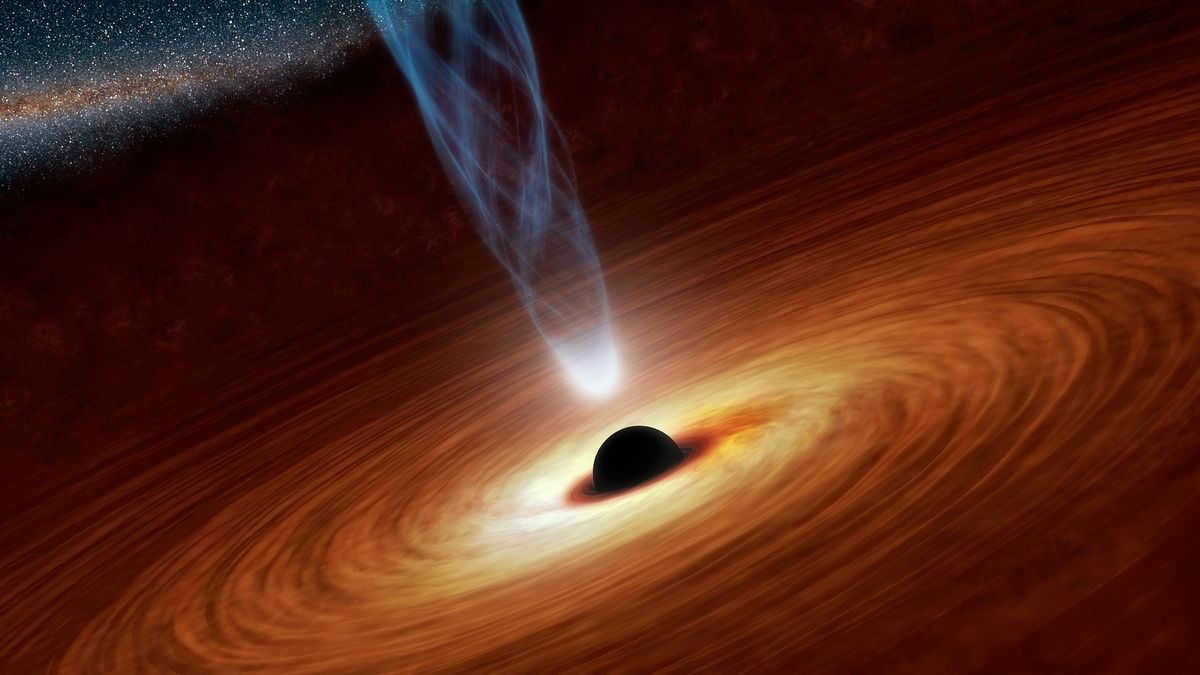
Astronomers have made a groundbreaking discovery in the epicenter of the galaxy. They have located an immense black hole, surrounded by a smaller black hole in orbit. The smaller black hole completes its orbit around the larger one every one hundred years. Additionally, there are thousands of other miniature black holes present. It is believed that virtually every galaxy in the universe harbors a black hole at its core.
The gravitational force exerted by these black holes causes nearby stars to follow peculiar trajectories. The center of the galaxy is teeming with a vast array of stars, all of which are either old or in the final stages of their lifecycle.
The central portion features a lintel that spans an impressive 27,000 light years in size. Positioned at a 44-degree angle to the imaginary line connecting our star to the galactic core, this lintel is home to approximately 22 million aging stars. Encircling the lintel is a ring of gas, which serves as the birthplace for new stars.
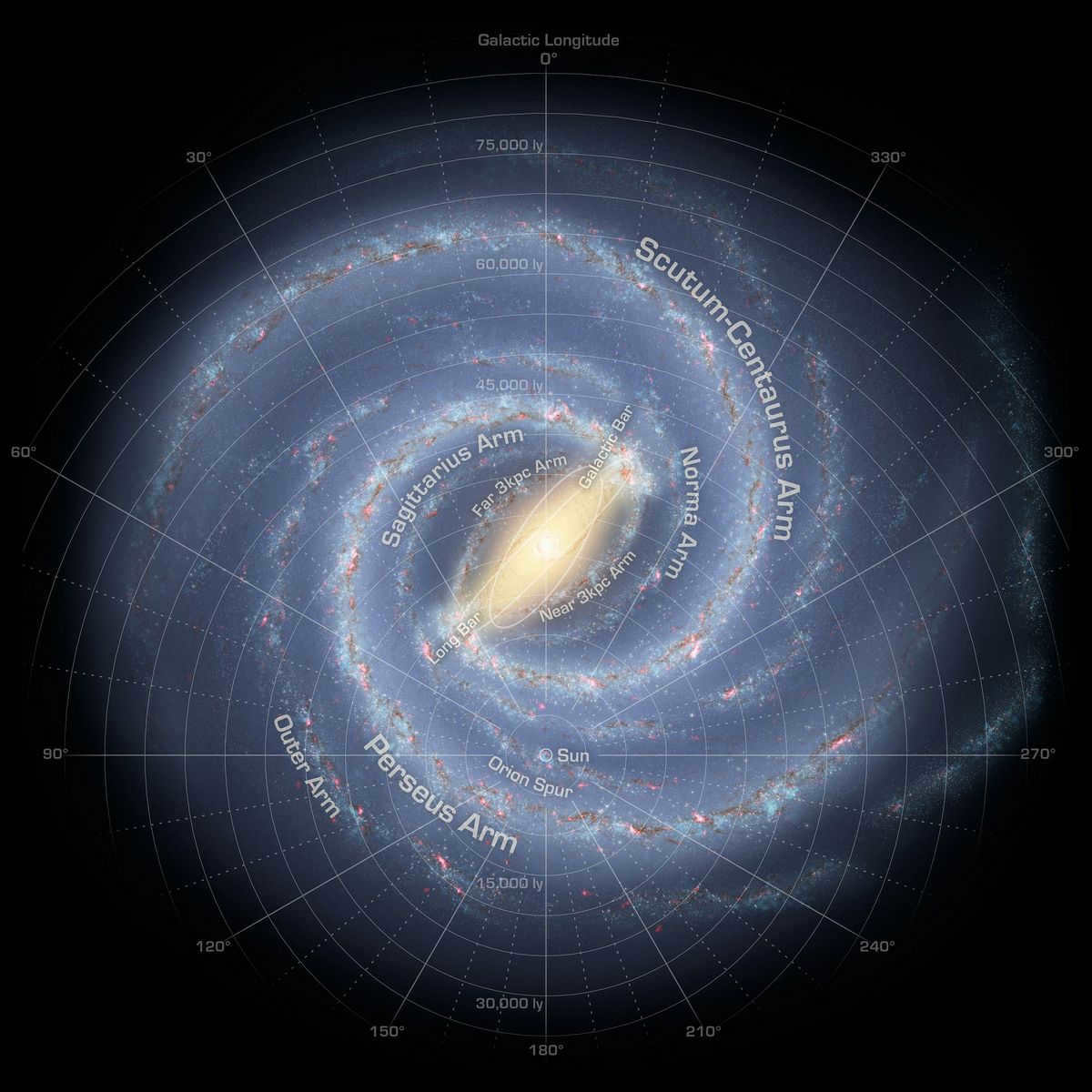
Spiral arms
There are five massive spiral arms located immediately behind the gas ring. These arms span approximately 4 thousand parsecs and each one has its own unique name:
- The Swan Arm.
- The Perseus Arm.
- Orion’s arm.
- The Sagittarius Arm.
- The Centauri Arm.
Our solar system is situated within the Orion’s arm, towards its inner region. This arm consists of molecular gas, dust, and stars. The gas is unevenly distributed, which introduces slight deviations in the galaxy’s rotational patterns and leads to a certain degree of error.
The Disk and the Corona
Our galaxy is shaped like a massive disk, containing gas nebulae, cosmic dust, and numerous stars. The diameter of this disk measures approximately 100,000 light years. Close to the surface of the disk, one can find newly formed stars and gas clouds. Active star formation takes place within the disk and its spiral arms.
Located at the outer edge of the galaxy is the corona, which extends beyond its boundaries for a distance of up to 10 light years. The corona takes the form of a spherical halo and rotates at a much slower pace compared to the high speed of the disk.
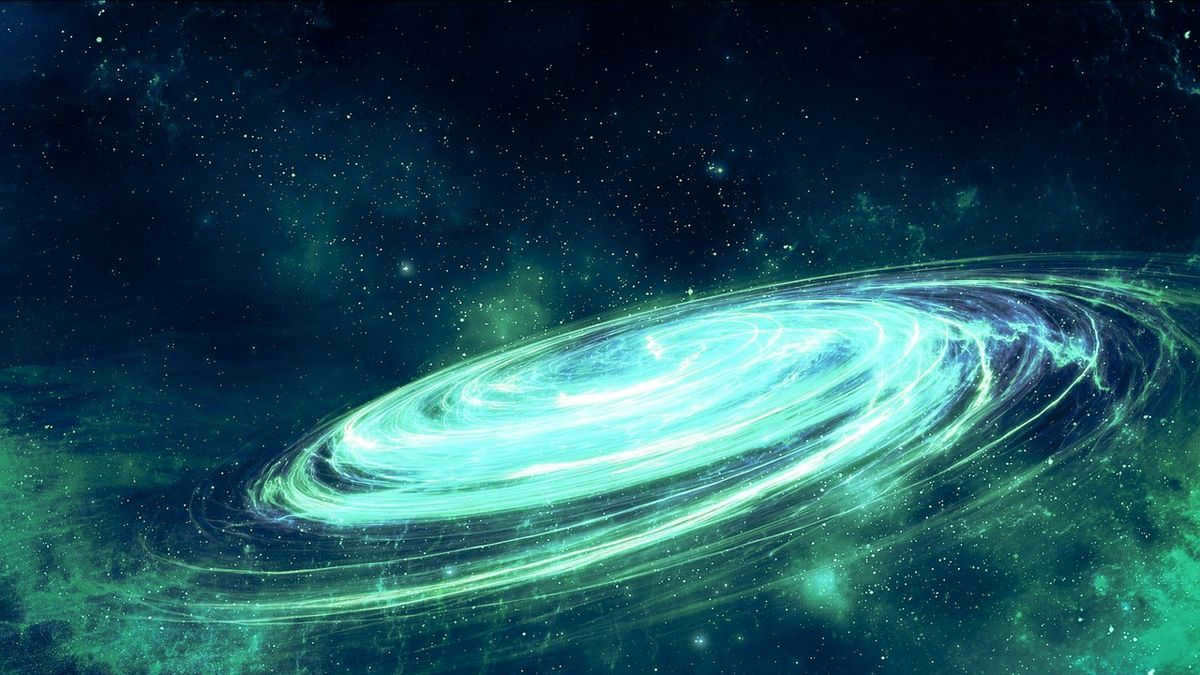
The galaxy is composed of a collection of hot gas, aging stars, and small galaxies. These components move in random, elliptical orbits around the central core. Experts in space exploration theorize that the halo formed as a result of the absorption of smaller galaxies. It is believed that the halo is approximately the same age as the Milky Way, and as a result, star formation within it has ceased.
From any location on Earth, individuals have the opportunity to observe the magnificent Milky Way in the clear and dark night sky. Its appearance is reminiscent of a broad band that resembles a translucent cloud with a white hue. Due to the fact that our solar system is positioned on the inner section of the Orion’s arm, humanity can only catch a glimpse of a small portion of this vast galaxy.
Our star, the Sun, is situated at the outermost region of the galactic disk. The distance between our star and the core of the galaxy amounts to a staggering 28 thousand light years. To complete a full orbit around the galactic nucleus, the Sun would require a time span of 200 million years. Over the course of its existence, our star has circumnavigated the galaxy approximately thirty times.
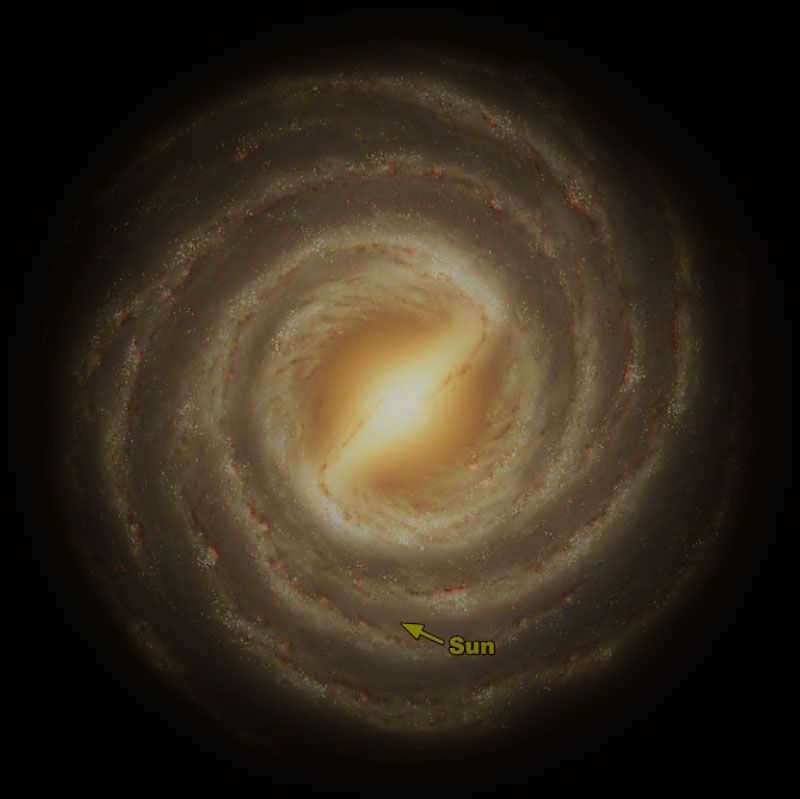
Our galaxy, the Milky Way, is situated in a unique position where the rotational velocity of stars aligns perfectly with the rotation of the spiral arms. This interaction ensures that stars remain within the arms and never venture outside of them.
This type of rotation is not commonly found in other galaxies. Typically, spiral arms have a consistent angular velocity, similar to spokes on a bicycle wheel. However, the stars within these arms move at different speeds, causing them to move in and out of the spiral arms.
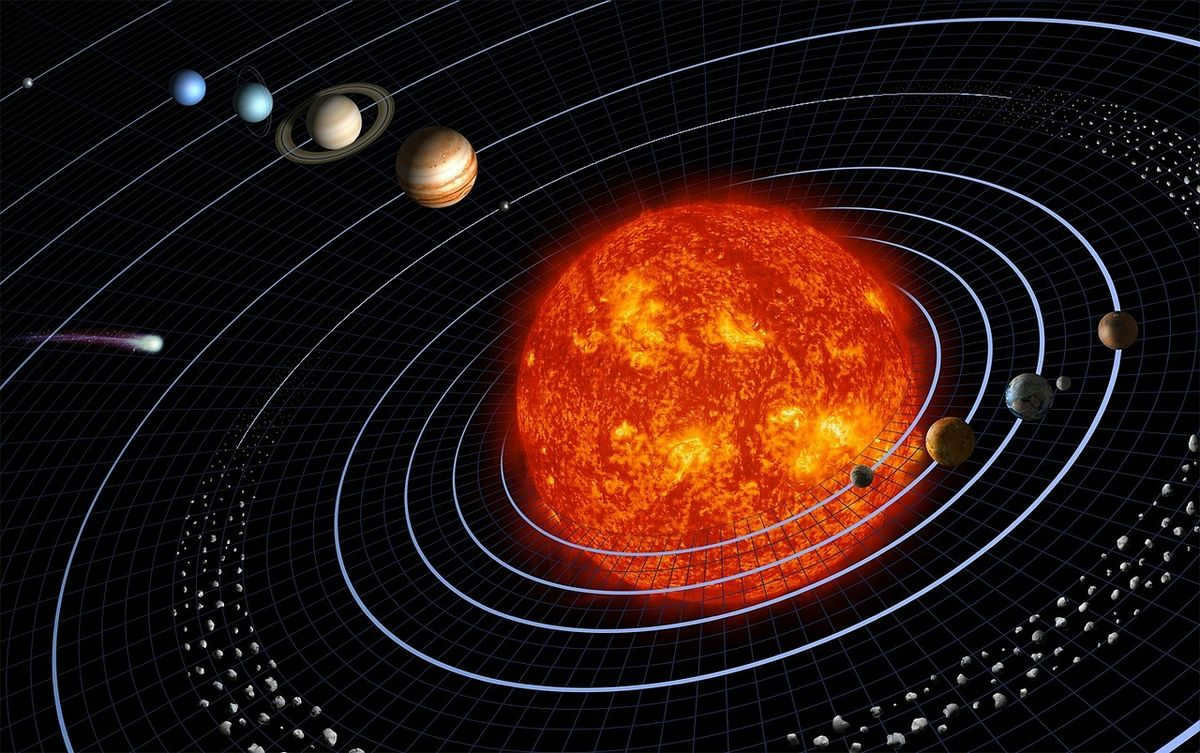
This region is referred to as the corotational circle or the “belt of life”. Scientists posit that habitable planets can only be found in the corotation zone, where there is a scarcity of stars. The spiral arms, on the other hand, have intense radiation that makes living conditions inhospitable. Consequently, there are only a limited number of systems where life can potentially emerge, based on this hypothesis.
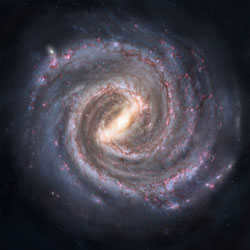
Science
Every individual has a unique perception of what constitutes their place of belonging. While some may consider it to be the shelter that covers their heads, for others, home signifies the planet Earth – a solid sphere that rapidly traverses the cosmos in its intricate orbit around the sun.
Irrespective of the grandeur we ascribe to our world, it remains minuscule in comparison to the vastness of a colossal stellar system, the scale of which is beyond comprehension. This stellar system is recognized as the Milky Way Galaxy, which can justifiably be acknowledged as our place of origin as well.
The spiral arms of the galaxy
The Milky Way – is a spiral galaxy with a core that extends down the middle of the spiral. Approximately two-thirds of all known galaxies are spiral galaxies, and approximately two-thirds of them have a core. Therefore, the Milky Way is part of the majority of galaxies.
Spiral galaxies possess arms that emanate from the core resembling spokes of a wheel that curve in a spiral pattern. Our solar system is situated in the core of one of these arms, which is known as Orion’s arm..
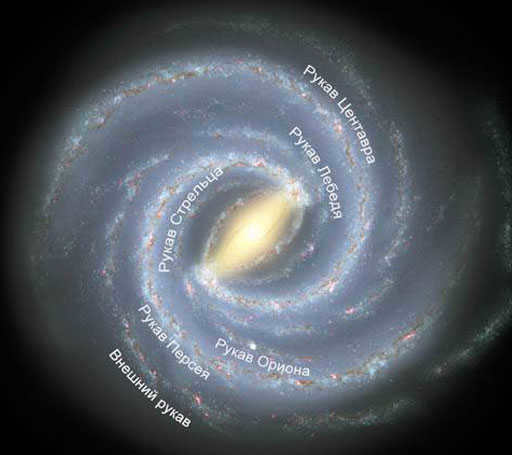

Previously, it was believed that Orion’s arm was a small offshoot of larger arms like the Perseus arm or the Centauri Shield arm. However, recent research suggests that the Orion arm is actually a branch of the Perseus arm and does not extend from the center of the galaxy.
The challenge arises from the fact that we cannot observe our galaxy from an external perspective. Our understanding of its shape is based on observations made from within it. Nevertheless, scientists have estimated that this arm spans approximately 11,000 light-years in length and has a thickness of around 3,500 light-years.

Supermassive black hole
Scientists have managed to find the tiniest supermassive black holes, which weigh around 200,000 times more than the Sun. In contrast, regular black holes are only about 10 times the mass of our Sun. The Milky Way contains an immensely colossal black hole at its core, and its mass is truly difficult to comprehend.
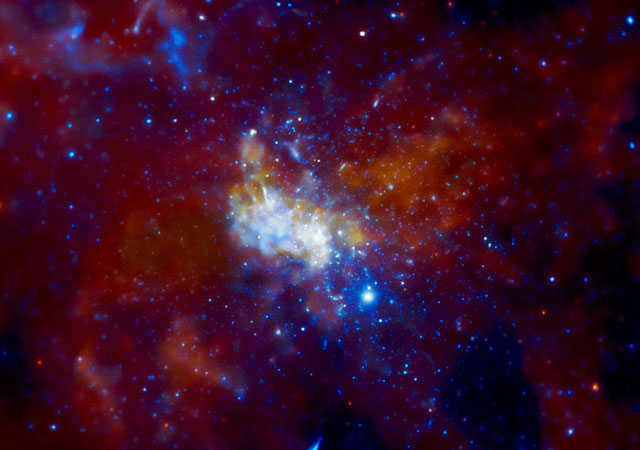
Over the course of the last decade, astronomers have been closely observing the movements of stars circling around the star known as Sagittarius A, a densely packed area situated at the core of our galaxy’s spiral. Through careful analysis of these star motions, it has been established that concealed behind a thick veil of dust and gas within Sagittarius A* lies a supermassive black hole, boasting a mass that is a staggering 4.1 million times greater than that of our Sun!
The animation presented below depicts the actual movement of stars surrounding the black hole from 1997 to 2011 within a one cubic parsec region at the core of our galaxy. As stars draw near to a black hole, they undergo a looping trajectory around it at extraordinary velocities. As an example, one particular star, S 0-2, is hurtling through space at a speed of 18 million kilometers per hour: initially attracted by the black hole’s gravitational pull, only to be abruptly repelled.
More recently, scientists have observed a gas cloud approaching a black hole, only to be torn apart by its immense gravitational force. Portions of this cloud were engulfed by the black hole, while the remaining fragments began to resemble elongated pasta shapes, measuring over 160 billion kilometers in length.
Magnetic Particles in the Galactic Center
Aside from harboring a supermassive black hole, the center of our galaxy is a hub of activity with old stars dying and new ones being born at an impressive rate.
Recently, scientists have discovered another intriguing feature at the galactic center: a stream of high-energy particles that spans a distance of 15,000 parsecs across the Milky Way, equivalent to half its diameter.
While these particles are invisible to the naked eye, magnetic imaging reveals that they form geysers that cover approximately two-thirds of the visible sky.
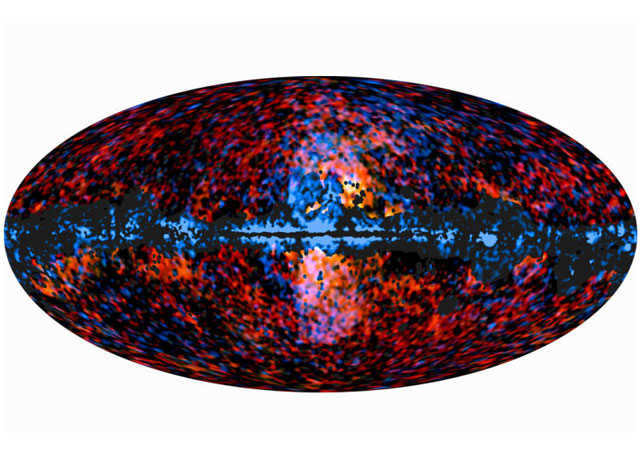
What is the cause of this phenomenon? Stars have been appearing and disappearing for a million years, creating a constant flow towards the outer arms of the galaxy. This flow has an energy level a million times greater than a supernova.
The particles within this flow are moving at incredible speeds. Astronomers have developed a model of the magnetic field that is prevalent in our galaxy based on the structure of this particle flow.
The latest celestial bodies
What is the frequency at which new celestial bodies emerge within our galaxy? This has been a longstanding inquiry among researchers. Through the process of mapping regions within our galaxy that contain aluminum-26, an isotope of aluminum that manifests during stellar birth or demise, scientists have ascertained that the Milky Way galaxy gives rise to 7 novel celestial bodies annually, and roughly twice every century a significant star detonates, giving birth to a supernova.
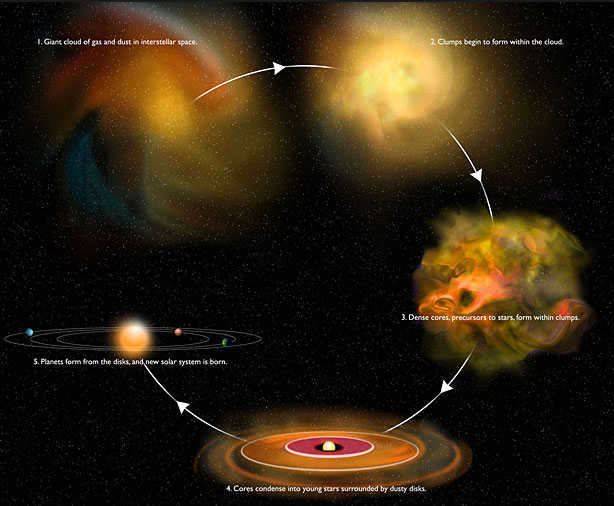
In terms of star production, the Milky Way galaxy is not the most prolific. As stars reach the end of their lives, they expel elements like hydrogen and helium into space. Over hundreds of thousands of years, these particles come together to form molecular clouds, which eventually become dense enough to collapse under their own gravitational pull and give birth to new stars.
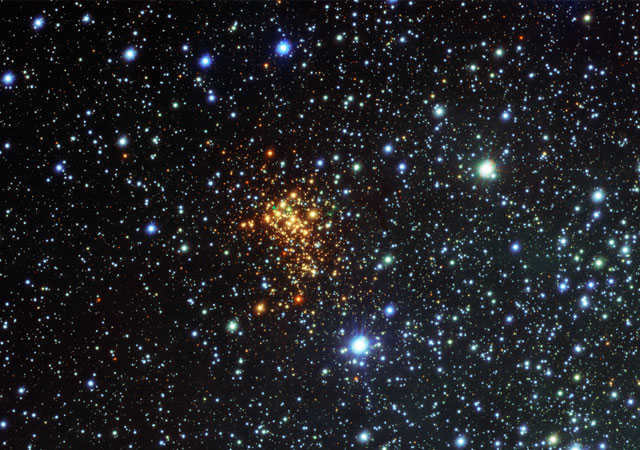
The galaxy is similar to an ecosystem where the cycle of life and death supports growth. The elements of a specific star will eventually become part of countless new stars. This phenomenon drives the continuous evolution of our galaxy, creating favorable conditions for the emergence of planets similar to Earth.
Although new stars are constantly being born and dying in our galaxy, their quantity is known: the Milky Way contains approximately 100 billion stars. According to recent studies, it is estimated that each star has at least one or more planets orbiting around it. Therefore, the total number of planets is estimated to be between 100 and 200 billion.
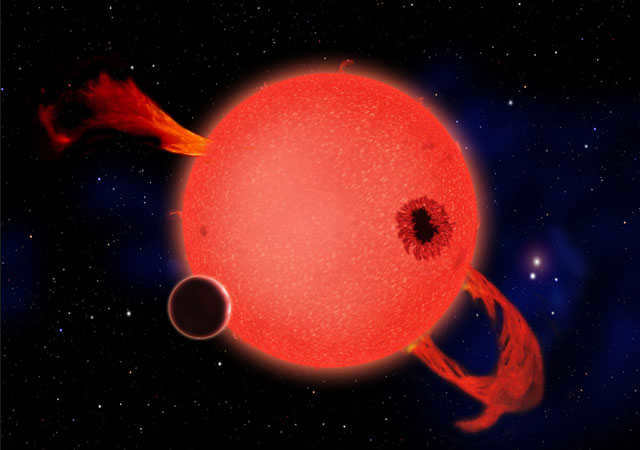
The conclusion was reached by scientists who studied stars such as red dwarfs of spectral class M. These stars, which are smaller than our sun, make up 75 percent of all the stars in the Milky Way. One star in particular, Kepler 32, has caught the attention of researchers as it is home to five planets.
Detecting planets is a challenging task, unlike stars, because they do not emit their own light. We can only confirm the presence of a planet around a star when it passes in front of the star and blocks its light.
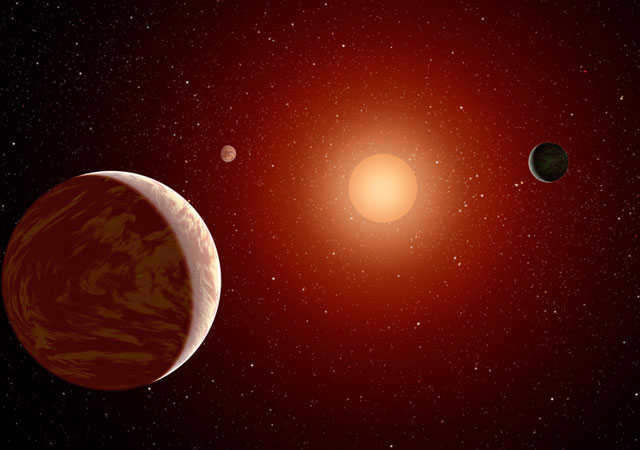
The planets in the Kepler-32 star system exhibit the same behavior as exoplanets orbiting other M dwarf stars. They are situated at similar distances and have comparable sizes. Therefore, the Kepler-32 system can be considered a representative example of a system within our galaxy.
Planets similar to Earth
If there are over 100 billion planets in our galaxy, how many of them resemble Earth? Surprisingly, not many. There exists a multitude of planet varieties: gas giants, pulsar planets, brown dwarfs, and even planets that experience showers of molten metal from the atmosphere. Those planets composed of solid rock may be positioned either too far or too close to a star, making them highly improbable candidates for Earth-like conditions.
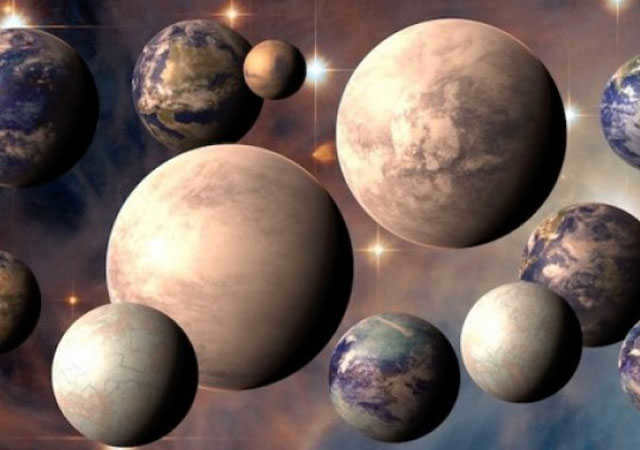

Recent studies indicate that there may be a higher number of planets similar to Earth in our galaxy than previously estimated, specifically between 11 billion and 40 billion. A group of scientists examined 42,000 stars that share similarities with our Sun and embarked on a search for exoplanets that could potentially exist within the habitable zone. Among these stars, they discovered a total of 603 exoplanets, with 10 meeting the specified search criteria.
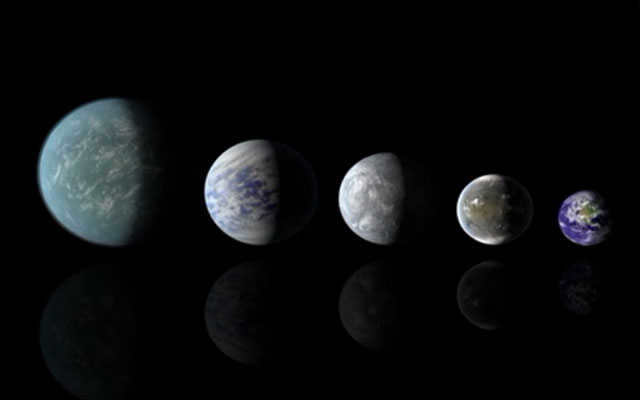
Through the analysis of stellar data, scientists have demonstrated the presence of an immense number of Earth-like planets that remain undiscovered. These planets, in theory, possess the necessary conditions to sustain liquid water, thereby creating the potential for the emergence of life.
Galactic Collision
Although the formation of new stars continues in the Milky Way galaxy, it cannot increase in size unless it acquires additional material from external sources. Remarkably, the Milky Way is currently undergoing expansion.
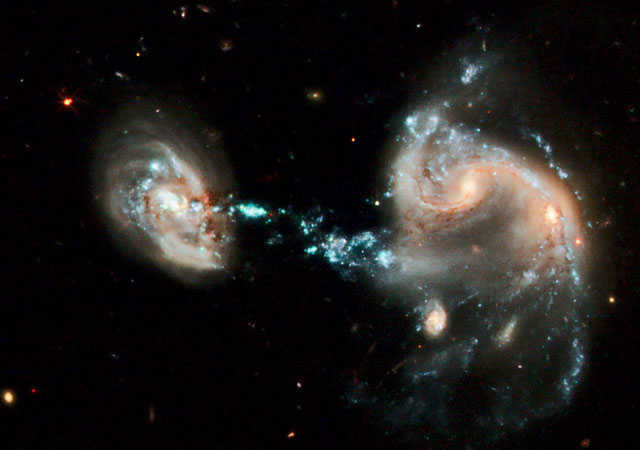
Previously, the growth of our galaxy was not well understood. However, recent discoveries have indicated that the Milky Way is a unique galaxy known as a “cannibal galaxy”. This means that it has consumed other galaxies in the past and is likely to continue doing so until it is eventually consumed by a larger galaxy.
Using the Hubble Space Telescope and analyzing seven years of photographic data, scientists have observed a peculiar movement pattern in stars located at the outer edge of the Milky Way. Unlike other stars that either move towards or away from the galactic center, these stars appear to drift along the edge. It is believed that this star cluster represents the remnants of a previously swallowed galaxy.
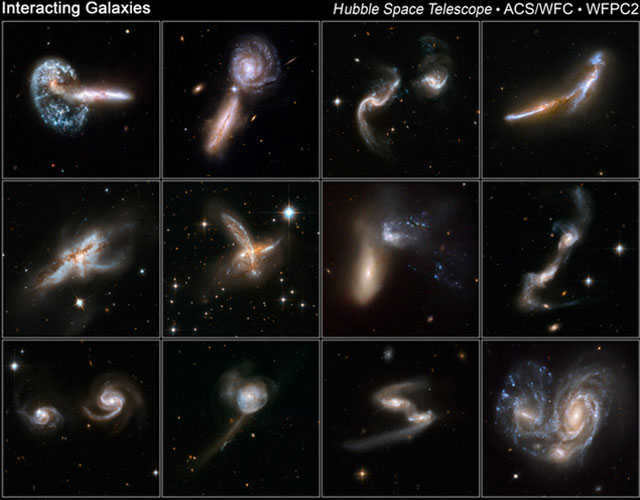
This collision likely occurred billions of years ago and it is probably not the final one. Considering our current velocity, our galaxy will collide with the Andromeda galaxy 4.5 billion years from now.
The influence of satellite galaxies
While the Milky Way is categorized as a spiral galaxy, it does not exhibit a perfect spiral shape. It possesses a central bulge, which is formed by hydrogen gas molecules erupting from the flat disk of the spiral.
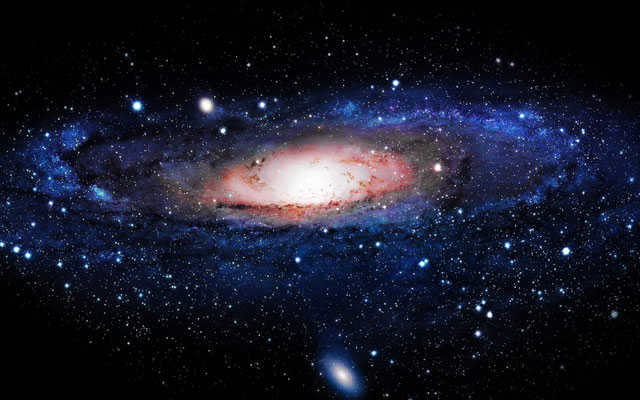
Astronomers have been perplexed for years by the peculiar bulge in the galaxy. It is logical to assume that the gas is being pulled into the disk rather than being expelled. The more they investigated this phenomenon, the more perplexed they became. It vibrates at its own unique frequency.
What could be causing this phenomenon? Presently, scientists attribute it to dark matter and satellite galaxies, specifically the Magellanic Clouds. These two galaxies are relatively small and together they account for only 2 percent of the total mass of the Milky Way. This is insufficient to have a significant impact on the galaxy.
Nevertheless, as the dark matter traverses the Clouds, it generates ripples that seemingly impact the pull of gravity, amplifying it, thus causing hydrogen to leak away from the galactic core.
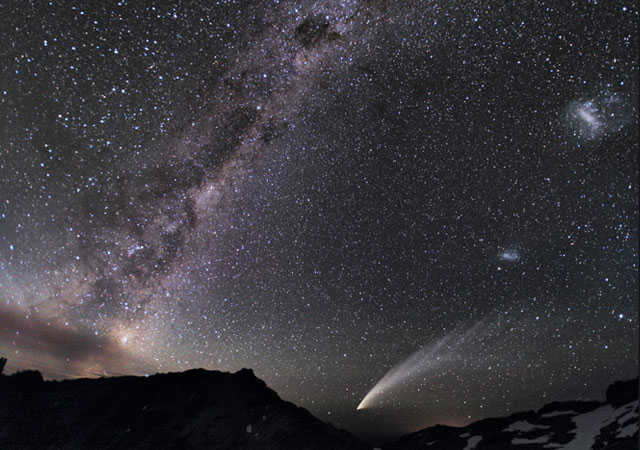
The Milky Way is orbited by the Magellanic Clouds. The presence of these galaxies causes the spiral arms of the Milky Way to appear to sway as they pass by.
Twin galaxies
While the Milky Way galaxy is unique in many ways, it is not particularly rare. Spiral galaxies are common throughout the universe. With approximately 170 billion galaxies within our field of view alone, it is likely that there are galaxies out there that are very similar to our own.
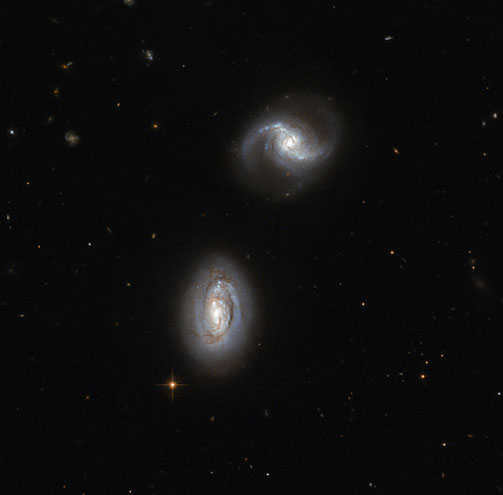
It’s an amazing stroke of luck to discover a galaxy like NGC 1073 that shares so many similarities with our own Milky Way, including satellites and a supermassive black hole at its center. Astronomers are studying NGC 1073 to gain a deeper understanding of our own galaxy. By observing NGC 1073 from a side view, we can gather valuable insights into the structure and appearance of the Milky Way.
The Galactic Year
On our planet, a year is defined as the duration it takes for the Earth to complete one orbit around the Sun. In this 365-day cycle, we consistently return to the starting point. Similarly, our entire solar system follows a rotational pattern around a massive black hole situated at the heart of our galaxy. However, this galactic revolution is a significantly longer process, spanning a staggering 250 million years. Thus, since the extinction of the dinosaurs, we have only traversed a mere quarter of this vast cosmic journey.
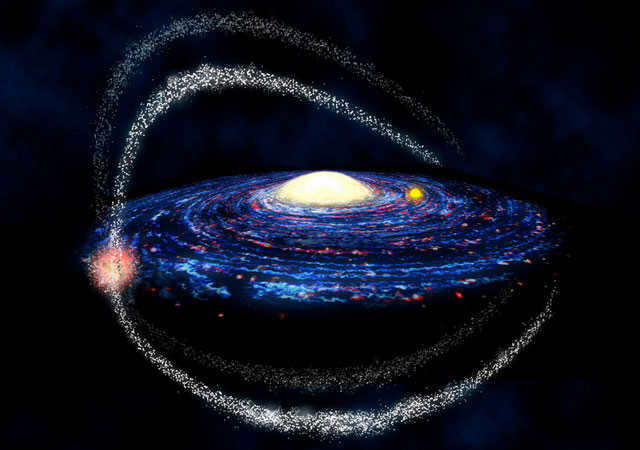

Descriptions of our solar system often neglect to mention its movement through space, much like everything else in our world. In relation to the central point of the Milky Way, it moves at a staggering speed of 792,000 kilometers per hour. To put it into perspective, if you were traveling at this same velocity, you could circumnavigate the entire globe in just 3 minutes.
The time it takes for the Sun to complete one full orbit around the center of the Milky Way is referred to as a galactic year. Currently, the Sun has only experienced 18 galactic years in its lifetime.
The night sky has always fascinated humans throughout history. People from all over the world have attempted to understand our position in the Universe and visualize its structure. Thanks to scientific advancements, we have been able to transition from romantic and religious beliefs to logically proven theories supported by extensive evidence. Today, even schoolchildren have a basic understanding of our Milky Way Galaxy, including its name, origins, and speculated future.
Etymology of the Name
The term “Milky Way Galaxy” is essentially a redundancy. The word “galactikos” in ancient Greek roughly translates to “milky”. This is how the people of Peloponnese referred to the group of stars in the night sky, believing that it was created by the fiery goddess Hera. According to the myth, Hera splashed breast milk in anger when she refused to nurse Heracles, Zeus’ illegitimate son. These milk drops formed a path of stars that can be seen on clear nights. Centuries later, scientists realized that the stars they were observing were only a small fraction of the countless celestial bodies in existence. They named the region of the universe where our planet is located the Galaxy or Milky Way system. As the existence of similar formations in the cosmos was confirmed, the term “Galaxy” became universally used to describe them.
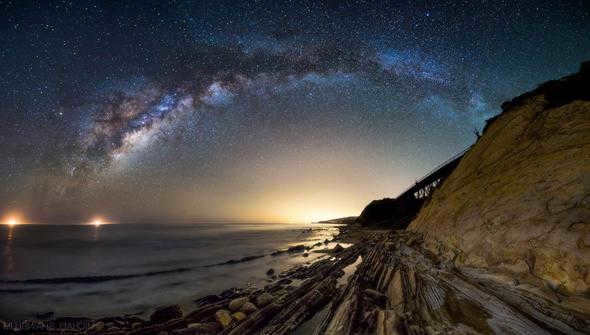
An in-depth examination
Our understanding of the composition of the region of space that encompasses the solar system has not been heavily influenced by the ancient Greeks. The concept of our galaxy’s configuration has evolved from Aristotle’s belief in a spherical universe to modern theories that account for phenomena such as black holes and dark matter.
The fact that Earth is situated within the Milky Way system presents challenges for determining the precise shape of our galaxy. An accurate answer to this question necessitates an external perspective, one that can only be attained from a significant distance away. Unfortunately, contemporary science lacks the means to achieve such a vantage point. As a substitute, researchers gather data on the structure of the galaxy and compare it with the characteristics of other cosmic systems that can be observed and studied.
Based on the data we have gathered, we can confidently state that our Galaxy is in the form of a disk, which has a thickening or bulge in the center, with spiral arms radiating outward. These spiral arms are home to the most luminous stars within the galaxy. The diameter of this disk is greater than 100,000 light-years.
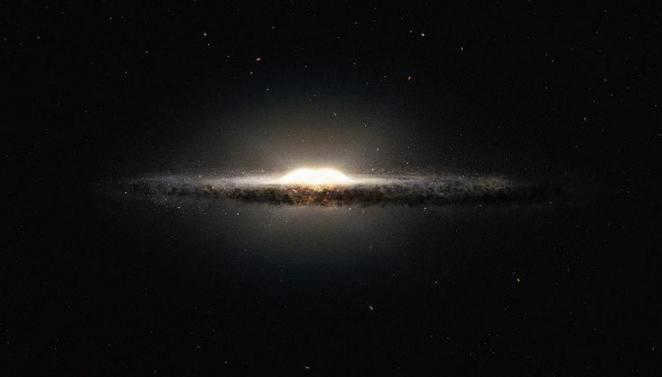
Composition
The structure of our galaxy is obscured by interstellar dust, making it challenging to study. However, radio astronomy techniques have allowed us to overcome this obstacle. By using waves of a specific wavelength, we are able to obtain clear images of our galaxy. Based on available data, our galaxy has a diverse composition.
Essentially, we can identify two main components: the halo and the disk proper. The halo exhibits the following characteristics:
- It has a spherical shape;
- The bulge is considered to be the center of the halo;
- The middle part of the halo is characterized by the highest concentration of stars, while the density decreases significantly towards the edges;
- The rotation speed of this particular region of the galaxy is relatively slow;
- The halo mainly consists of old stars with relatively low masses;
- A large portion of the subsystem is occupied by dark matter.
The stellar density in the galactic disk is much higher compared to the halo. The arms of the galaxy are populated with young stars and even objects in the process of formation.
The center of the Milky Way is situated in the Sagittarius constellation. To gain a comprehensive understanding of our galaxy, it is essential to study this region. In scientific literature, the term “core” can either denote the central area with a diameter of a few parsecs or encompass the bulge and the gas ring, which are believed to be the birthplace of stars. For the purpose of this discussion, we will refer to the first definition of the term.
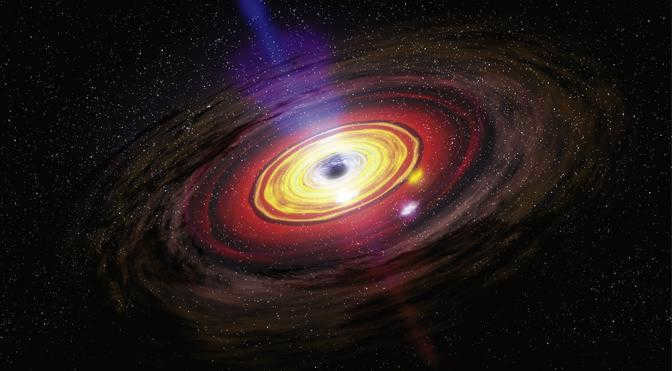
Visualizing the core of the Milky Way is a challenging task due to the abundance of cosmic dust that obstructs visible light. However, advancements in infrared imaging have significantly enhanced astronomers’ understanding of our Galaxy’s central region.
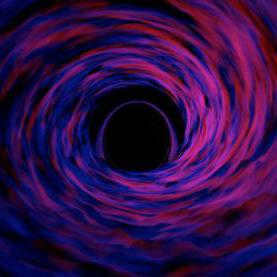
Information regarding the unique characteristics of radiation in the central region of our galaxy has led scientists to theorize that a black hole exists at the core of the nucleus. Its mass exceeds that of the Sun by over 2.5 million times. Researchers believe that an additional black hole, albeit of lesser magnitude, revolves around this central entity. According to current knowledge of cosmic structure, it is presumed that similar objects are situated in the central regions of most galaxies.
Light versus darkness
The combined impact of black holes on the movement of stars brings its own modifications to the appearance of our Galaxy: it results in distinct alterations in orbits, which are atypical for celestial bodies, particularly those near the Solar System. The investigation of these trajectories and the correlation between velocity of motion and distance from the Galaxy’s center has formed the foundation of the theory of mysterious matter, which is currently being actively developed. Its true essence still remains a puzzle. The presence of this enigmatic matter, which is believed to make up the vast majority of all matter in the Universe, is solely detected through the gravitational effect it has on orbits.
A celestial nut
Examining the central region of the system at longer wavelengths has yielded intricate infrared visuals. Our Milky Way galaxy, it appears, harbors a core that bears a striking resemblance to a nut nestled within its shell. This celestial “peanut” is actually an assemblage of over 20 million red giants, which are stars that appear bright but emit less heat.
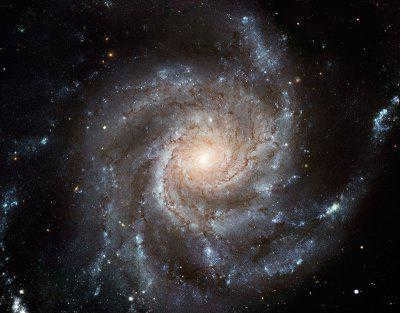
The investigation related to the discovery of the “peanut” in the heart of the stellar system not only illuminated the composition of our galaxy but also provided insight into its evolutionary process. Initially, a conventional disk existed within the vast expanse of space, eventually giving rise to a bar-like structure. Through internal mechanisms, this bar underwent transformations and assumed the shape of a walnut.
Our place in the cosmic chart
The Milky Way, our home galaxy, showcases lively star formation in both its central bar and its sprawling spiral arms. These arms, named after the constellations Perseus, Cygnus, Centaurus, Sagittarius, and Orion, host clusters of stars and nebulae. It is within the vicinity of the Orion arm, situated at a distance of at least 28,000 light years from the galactic core, that our Solar System resides. Experts believe that this region possesses specific characteristics that have facilitated the development of life on our planet, Earth.
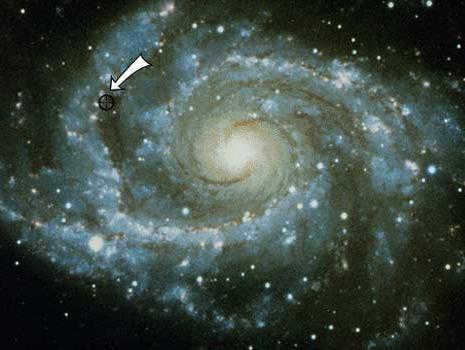
The rotation of the galaxy and our solar system is a collective movement in which the individual components follow different laws of motion. Some stars are connected to the spiral branches at certain times, while others are separated from them. However, the luminaries located at the boundary of the corotational circle do not undergo such movements. The Sun, for example, is one of these luminaries and is protected from the powerful processes that occur within the arms of the galaxy. Even a slight deviation from this boundary would eliminate the unique conditions that support life on our planet.
The Sun is just one of many celestial bodies that populate our galaxy. According to the most recent data, there are over 400 billion stars, whether they are solitary or grouped together. Among these stars, the closest one to us is Proxima Centauri, which is part of a triple-star system alongside the slightly more distant Alpha Centauri A and Alpha Centauri B. The most brilliant object in the night sky is Proxima Centauri, while Sirius A, located in the constellation of Canis Major, holds the title for the brightest point. Its luminosity, as per various sources, surpasses that of the Sun by 17-23 times. Sirius is not alone either, as it has a companion with a similar name, known as Sirius B.
Children often start to get acquainted with the appearance of our Galaxy by searching the sky for Polaris or Alpha Minor Bear. The reason for its popularity is its location above the North Pole of the Earth. In terms of brightness, Polaris is significantly brighter than Sirius (almost two thousand times brighter than the Sun), but it cannot compete with Alpha Big Dog for the title of the brightest due to its distance from Earth (estimated to be between 300 and 465 light years away).
Categories of Celestial Bodies
Celestial bodies vary not only in their luminosity and distance from the observer, but also in other characteristics. Each celestial body is assigned a specific size, measured in relation to the corresponding parameter of the Sun, as well as a degree of surface heating and color.
The most remarkable sizes can be observed in supergiants, while neutron stars exhibit the highest concentration of matter per unit volume. The color of a celestial body is closely linked to its temperature:
- Celestial bodies with a red hue are considered the coldest;
- When the surface temperature reaches 6,000º (similar to the Sun), celestial bodies appear yellow;
- Celestial bodies with white and blue hues have temperatures exceeding 10,000º.
The brightness of a star can change and reach its peak just before it collapses. Supernova explosions play a crucial role in our understanding of the appearance of our Milky Way galaxy. The images captured by telescopes during this process are truly remarkable.
By analyzing the information gathered from these images, scientists have been able to piece together the sequence of events that led to the explosion and make predictions about the future of various celestial objects.
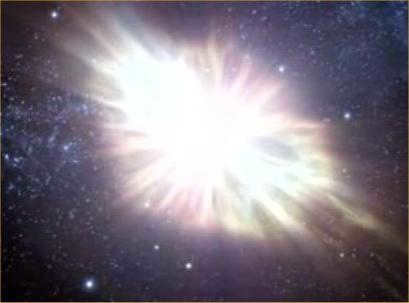

The future of the Milky Way
Our Galaxy and other galaxies are in constant motion and interaction. Astronomers have discovered that the Milky Way has repeatedly absorbed its neighboring galaxies. Similar processes are anticipated in the future. Over time, it will incorporate the Magellanic Cloud and several other dwarf systems. The most remarkable event is expected to occur in 3-5 billion years when it will collide with the Andromeda Nebula, the only neighboring galaxy visible to the naked eye from Earth. As a result, the Milky Way will transform into an elliptical galaxy.


The Milky Way is a computer model of a spiral galaxy with a junction, where two of the four arms dominate.
This galaxy, also known as the Galaxy (capitalized), encompasses the Earth, the solar system, and all individual stars that can be seen with the naked eye. It refers specifically to spiral galaxies that have a junction.
Together with the Andromeda Galaxy (M31), the Triangle Galaxy (M33), and over 40 dwarf satellite galaxies (belonging to both the Milky Way and Andromeda), the Milky Way forms part of the Local Group of galaxies, which is a component of the Local Supergroup (Virgo Supergroup).
Etymology
The origin of the name Milky Way can be traced back to Latin. It is a translation of the Latin phrase via lactea which means “milky way”. This phrase itself is a direct translation of the Greek phrase ϰύϰλος γαλαξίας, meaning “milky circle”. The term Galaxy is derived from the Greek word γαλαϰτιϰός, which means “milky”. According to an ancient Greek legend, Zeus wanted to make his son Heracles immortal, so he allowed him to drink the divine milk from his sleeping wife, Hera. However, when Hera woke up and realized what was happening, she pushed Heracles away, causing the milk to splash and form the Milky Way.
In the Soviet school of astronomy, our Galaxy or the Milky Way system was the term used to refer to the Milky Way galaxy. The Milky Way, in this context, denotes the visible stars that form the Milky Way as observed optically.
Outside of Western culture, various alternative names are given to the Milky Way, while the term “Way” is often retained. Different epithets are used instead of the phrase “Milky Way”.
Galaxy Structure
The Galaxy has a size of approximately 30 thousand parsecs (around 100,000 light-years, 1 quintillion kilometers) with an approximate average thickness of 1000 light-years. There are approximately 200 billion stars in the galaxy (current estimates range from 200 to 400 billion). The majority of the stars are arranged in a flat disk shape. As of January 2009, the Galaxy’s mass is estimated to be between 3-10 12 solar masses, or 6-10 42 kg. A recent minimum estimate suggests that the galaxy’s mass is only 5-10 11 solar masses. Most of the galaxy’s mass is not in stars and interstellar gas, but rather in the non-luminous dark matter halo.
In the 1980s, astronomers proposed the idea that the Milky Way is not just a regular spiral galaxy, but rather a spiral galaxy with a central junction. This theory was later confirmed in 2005 by the Lyman Spitzer Space Telescope, which revealed that the size of the central junction of our galaxy is actually larger than what was previously believed.
Scientists have determined that the galactic disk, which extends in various directions near the center of the galaxy, has a diameter of approximately 100,000 light-years. In comparison to the halo, the disk rotates at a significantly faster pace. The rate of rotation varies at different distances from the center. It starts at zero at the center and rapidly increases to a speed of 200-240 km/s at a distance of 2 thousand light-years. After that, it slightly decreases before increasing again to a similar value, where it remains relatively constant. Through studying the rotation characteristics of the disk, researchers were able to estimate its mass, which is found to be 150 billion times greater than the mass of the sun (M☉).
The region where young stars and star clusters are concentrated in the Milky Way is known as the flat component. These celestial objects are relatively young, with ages not exceeding a few billion years. Within this region, there are numerous bright and hot stars. Similarly, the gas in the Galactic disk is primarily concentrated near its plane. This gas is unevenly distributed, giving rise to various gas clouds. These clouds range in size and structure, with some extending over several thousand light-years and others no larger than a parsec.
Nucleus
The infrared captures the galactic center of the Milky Way.
The central regions of the Galaxy are characterized by a high concentration of stars: each cubic parsec near the center contains numerous stars. The distances between stars are much smaller compared to the area surrounding the Sun. Similar to other galaxies, the mass distribution in the Milky Way is such that the orbital velocity of most stars in the Galaxy remains relatively constant regardless of their distance from the center. Moving further away from the center towards the outer regions, the typical orbital velocity of stars ranges from 210-240 km/s. This velocity distribution, unlike what is observed in the solar system where different orbits have varying orbital velocities, is one of the factors contributing to the existence of dark matter.
The estimated length of the galactic jumper is approximately 27,000 light-years. This extraordinary pathway traverses the heart of the galaxy at an inclination of 44 ± 10 degrees relative to the imaginary line connecting our Sun and the center of the galaxy. Comprised predominantly of aged red stars, the jumper showcases the remnants of bygone eras. Encircling this celestial route is a prominent ring known as the Five Kiloparsec Ring. Within this ring lies the bulk of the Galaxy’s molecular hydrogen, fostering a dynamic environment for the birth of new stars. Remarkably, if viewed from the Andromeda Galaxy, the Milky Way’s galactic junction would undoubtedly shine as a prominent feature.
In 2016, a team of astrophysicists from Japan made an intriguing revelation when they announced the detection of a colossal black hole situated in the heart of our galaxy, specifically 200 light years away from the Galactic Center. This astronomical marvel, which has captivated the attention of many, is accompanied by a nebulous entity that spans a colossal region of space measuring 0.3 light-years in diameter. The mass of this celestial object has been estimated to be a staggering 100,000 times that of our Sun. However, despite these remarkable findings, there remains a lingering enigma surrounding the true nature of this enigmatic entity – whether it is truly a black hole or an entirely different cosmic phenomenon.
The spiral galaxy is a member of the spiral galaxy class, which indicates that it possesses spiral arms. These arms are situated within the plane of the galaxy’s disk. The disk itself is surrounded by a spherical halo, known as the halo, and further out, there is a spherical corona. Our solar system is positioned approximately 8.5 thousand parsecs away from the center of the galaxy. It is located near the galaxy’s plane, specifically on the inner boundary of an arm referred to as the Orion arm. Due to this positioning, we are unable to visually observe the shape of the arms. Recent observations of molecular gas (CO) have indicated that our galaxy possesses two arms originating from the bar within its inner region. Furthermore, there are a couple of additional arms within this inner region. These arms then transition into a four-arm structure, which can be observed in the outer regions of the galaxy through the neutral hydrogen line.
Glow
The vicinity of the Milky Way and its luminous glow.
The galactic halo, which has a round shape and extends beyond the galaxy for a distance of 5-10 thousand light-years, has a temperature ranging from approximately 5-10 5 K. Surrounding the galactic disk is a spheroidal halo comprised of ancient stars and globular clusters, with 90% of these clusters located within 100,000 light-years from the galactic center. However, recent discoveries have revealed that some globular clusters, such as PAL 4 and AM 1, are situated more than 200,000 light-years away from the center of the galaxy. The center of symmetry for the Milky Way’s halo aligns with the center of the galactic disk. The halo is primarily composed of extremely old, faint, and low-mass stars. These stars exist both individually and in globular clusters, some of which can contain up to a million stars. The spherical component of the Galaxy’s population is estimated to be over 12 billion years old, which is generally regarded as the age of the Galaxy itself.
While the Milky Way’s galactic disk is filled with gas and dust, which makes it challenging for visible light to pass through, the spheroidal component does not contain any of these elements. The disk is where active star formation takes place, particularly in the spiral arms, which are regions of higher density. In the halo, star formation has ceased. The disk is also where scattered clusters are primarily located. The majority of our galaxy is believed to be composed of dark matter, forming a dark matter halo with a mass ranging from 600 to 3000 billion M☉. This dark matter halo is concentrated towards the galactic center.
The stars and star clusters in the halo orbit around the galactic center in elongated paths. Due to the somewhat random rotation of individual stars (meaning neighboring stars can have velocities in any direction), the halo as a whole rotates at a very slow pace.
Various celestial objects come together to create diverse rotational systems. Take, for instance, the Moon revolving around the Earth, and the satellites encircling the massive planets forming their own systems abundant with celestial bodies. On a grander scale, the Earth and the other planets revolve around the Sun. This naturally leads to the question: could the Sun itself be a component of an even more vast system?
The 18th century saw the first comprehensive examination of this matter conducted by William Herschel, a renowned English astronomer. Herschel meticulously tallied the stars in various sections of the heavens and made a remarkable discovery: a vast celestial ring (later dubbed the galactic equator) that bisects the sky into two equal halves and boasts the highest concentration of stars. Furthermore, the closer a region is to this ring, the greater the number of stars it contains. Ultimately, it was determined that the Milky Way itself resides on this ring. From this, Herschel surmised that all the stars we observe coalesce into a colossal star system that is flattened along the galactic equator.
In the beginning, it was believed that all objects in the universe were components of our Galaxy, although Kant proposed that certain nebulae could be galaxies similar to the Milky Way. As early as 1920, the existence of extragalactic objects became a subject of debate (for example, the well-known Great Controversy between Harlow Shapley and Heber Curtis; the former argued for the uniqueness of our Galaxy). Kant’s theory was ultimately confirmed only in the 1920s, when Ernst Epic and Edwin Hubble successfully calculated the distance to several spiral nebulae and demonstrated that based on their distance, they could not be part of the Galaxy.
Position of the Sun in the Milky Way
Based on the most recent scientific calculations, the Sun is located approximately 26,000 ± 1,400 light years away from the galactic center. Initial estimates indicate that our star should be around 35,000 light years distant from the junction. Consequently, the Sun is positioned closer to the periphery of the disk rather than its core. Alongside other stars, the Sun orbits the center of the Milky Way at a velocity of 220-240 km/s, completing one revolution every 200 million years. Thus, throughout its existence, the Earth has completed no more than 30 revolutions around the galactic center.
The speed of the Sun’s rotation around the center of the Galaxy nearly matches the speed of the compression wave that creates the spiral arm. This is unusual for the Galaxy as a whole: the spiral arms rotate at a consistent angular velocity, much like the spokes of a wheel, while the motion of stars follows a different pattern. As a result, nearly all of the stars in the galaxy’s disk either lie within or outside of the spiral arms. The only location where the velocities of stars and spiral arms align is known as the corotational circle, and it is here that the Sun is situated.
The Earth considers this situation to be of utmost importance, as the spiral arms of the galaxy harbor intense phenomena that give rise to potent radiation, which can be detrimental to all forms of life. Furthermore, no atmosphere would be capable of providing sufficient protection against such radiation. However, our planet resides in a relatively tranquil region of the Galaxy, shielded from these cosmic catastrophes for hundreds of millions (or even billions) of years. It is conceivable that this favorable positioning has facilitated the emergence and endurance of life on Earth.
The Evolution of the Galaxy and its Future
Predictions about the potential collisions between our Galaxy and other galaxies, such as the Andromeda Galaxy, remain uncertain due to the unknown transverse velocity of objects beyond our galaxy.
Based on data released in September 2014, one model suggests that in approximately 4 billion years, the Milky Way will assimilate the Large and Small Magellanic Clouds, and in 5 billion years, it will ultimately be assimilated by the Andromeda Nebula.

